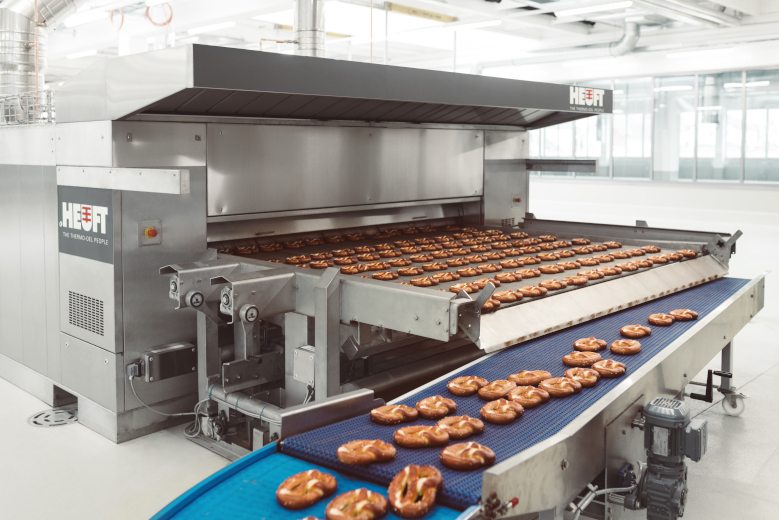
Efficient baking assignment: thermal oil tunnel ovens
Energy consumption is undisputed at the top of the industry’s concerns and efforts for improvement. Tunnel ovens offer opportunities to go the extra mile on the path to resource savings.
Energy consumption is undisputed at the top of the industry’s concerns and efforts for improvement. Tunnel ovens offer opportunities to go the extra mile on the path to resource savings.
Making its debut on the best stage for a first impression, at iba, the new, compact IMPRESSA bread line developed by FRITSCH for industrial production manages to save 20% of the floor space – about 5 m. This was accomplished, in part, by new sheeting technology incorporated in the revised Soft Dough Sheeter (SDS) and the new Soft Dough Roller (SDR).
Bread-making is a scientific symphony of physical, chemical, and rheological processes. Beyond the apparent simplicity of mixing flour, water, and yeast lies an intricate web of molecular and mechanical changes that transform these raw materials into bread.
The principle of the forked kneader came from the Mahot machine factory and provided mechanization of dough preparation. It has since proved itself in practice – and is still used today. The reason behind this is the technological proximity to French traditional, manual dough production.
A characteristic all trays have in common, regardless of endless possibilities in their layouts, is the safety guarantee provided for the products baked, time and again.
Cleaning can quite literally make or break the trays, respectively their life expectancy.
Transport crates for baked goods do not appear to differ much at first sight. They only vary in color, weight and height. However, when it comes to cleaning the crates, the situation is very different.
The KRONOS mixer from the WP BAKERYGROUP promises consistent mixing results independent of the personnel and fluctuating raw materials properties.
As a basis, the hygienic risk to food safety/shelf-life is taken as an example for baked goods. Subdivision takes place according to the hygiene sensitivity of the respective products. The basis
is always an assessment of the respective product

